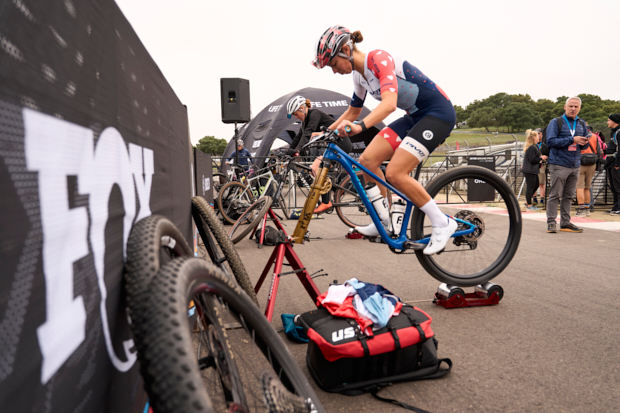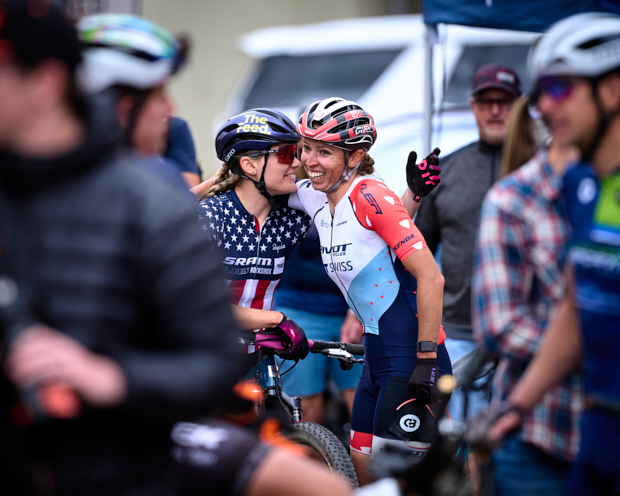How to Structure Your Training for a Long Event

As the weather starts to warm up and seasons shift, events are already full swing. Looking at the calendar, you may be starting to count down the months or weeks until your event. You’re finally thinking about a goal you set a long time ago, long before the magnitude of the undertaking set in. Now, you’re looking the goal square in the eyes and wondering what it’s going to take to cross the finish line. Here are some guiding principles you can use to structure your training, to make sure that you feel ready on race day.
When To Start Training
It’s never too early to start training, but there are some things you should consider when you build your long-term plan. When you look at professional athletes, they train for years and years to perfect their craft. The cumulative load their bodies endure season after season surely boosts their abilities, and your body is no different. The longer you spend honing your abilities and training, the stronger, more durable, and faster you will become. That said, not even professional athletes train year-round, without taking a break.
As a coach, a common pitfall I see amateur athletes make is to build their training hours too early leading into an event and to find themselves burnt out months before even toeing the line. If you’re eyeing a long event like Unbound, Leadville, a marathon, or an Ironman, you want at least 6 months of training (24 weeks) before the event. If you have more time than that, that’s great! Use it, but make sure that you plan some rest as well. Before the 6 months to go mark hits, take about 2 weeks off of training to let your mind and body recover so that you are ready to push all the way until your event. The last thing you want is to burn out a month before your event and to be forced to take the time off then.
When To Do Your Longest Workouts

If you hit your longest workouts out of the gate, you not only might not be ready for them, but you have nowhere to build from there. If you are training for one specific “ultra-endurance” style event you’ll want your longest workouts to fall somewhere around 2 weeks before the event. You can plan your training in reverse by planning your longest workout for 2 weeks before the event at 60-80% of the duration of the event and then back out from there. Each week should only build about 10-12% in volume throughout your program and don’t forget about recovery weeks as well!
I find that a lot of athletes start to panic around 3 months until race day. At 3 months out, you suddenly realize just how challenging this goal may be. For example, if you’re training for a marathon and you complete a 15-mile run, you may suddenly wonder how you’ll ever be able to do 11 more miles. Don’t fret! Three months is longer than you think and you’ll chip away at that goal little by little.
When To Start Your Taper

The reason that you do your longest workouts 2 weeks before your event, is because after that, you start to taper! A two-week taper is a conservative approach that should allow you to shed most, if not all, of your training fatigue without losing too much fitness. Those two weeks should have a decrease in your training load by about 60-90%.
Don’t fall victim to a common taper mistake of missing out on your nutrition. When you begin to taper you will be burning less calories so you may initially need a little less food, but don’t cut back so far that you are in a deficit. Taper time is not the time to lose weight. We don’t want our bodies to be working extra hard. Instead, we want to give our bodies everything they need to be successful. Try keeping your protein intake about the same during your taper and adjusting your carbohydrates according to your needs. Remember that 3 days before your event you may need to start carbo-loading as well. GoodLife Norwegian skin-on salmon and rice or Piedmontese ground-beef and pasta are two of my go-to meals.
Plan a Practice Event
One of the best ways to feel ready on race day is to plan a dress rehearsal. About 8-12 weeks before your main event, plan a practice event. This event should be shorter and “easier” but still allow you the chance to practice your preparations. For example, if you are doing a marathon or Ironman then you may want to register for a half in preparation. This practice race isn’t a time to set PRs, instead it’s a time to simulate exactly what you will do on the day that counts. Use your race equipment, practice your pre and during event nutrition and hydration strategies, and most importantly shake out the nerves!
Plan Ahead
The most important thing you can do in your training for your big event is to plan ahead. Don’t leave questions or difficult decisions for race day. That’s a recipe for stress. The goal of training is to prepare both the mind and body for the demands of the race. Leave no rock unturned so that when it’s time to race, all you have to do is have fun. Training is the hard work and racing is the reward.
Hannah Otto (formerly Finchamp) is a professional mountain biker and gravel racer. She’s the winner of the 2022 Leadville 100 and a 2023 Marathon World Cup Winner. Before her professional cycling days, Hannah competed in the sport of triathlon for 11 years. Hannah also holds a Bachelor of Science degree in both Athletic Training and Exercise Science, she is a Board Certified Athletic Trainer and USA Cycling Coach and has been personally coaching athletes since 2017.

